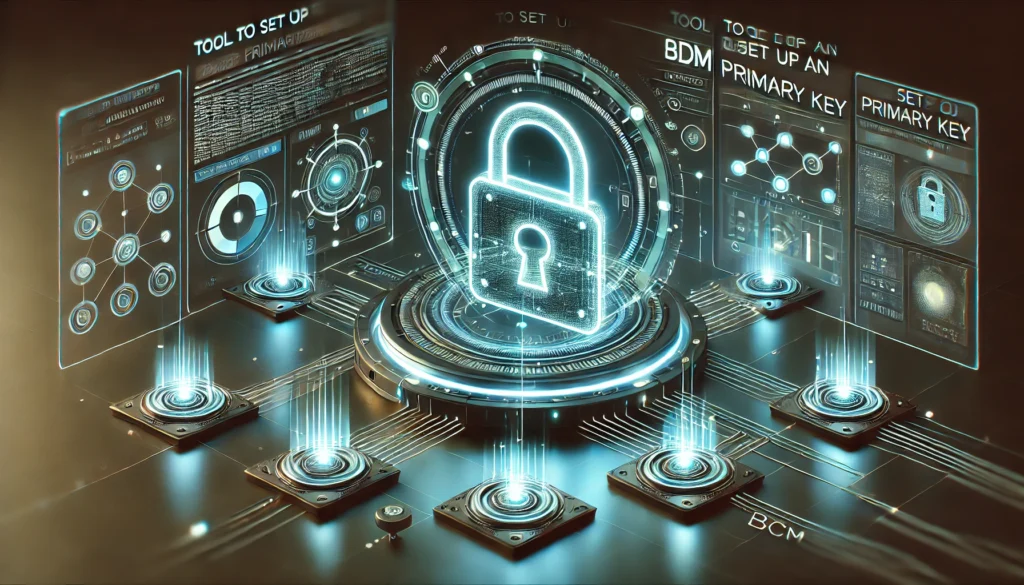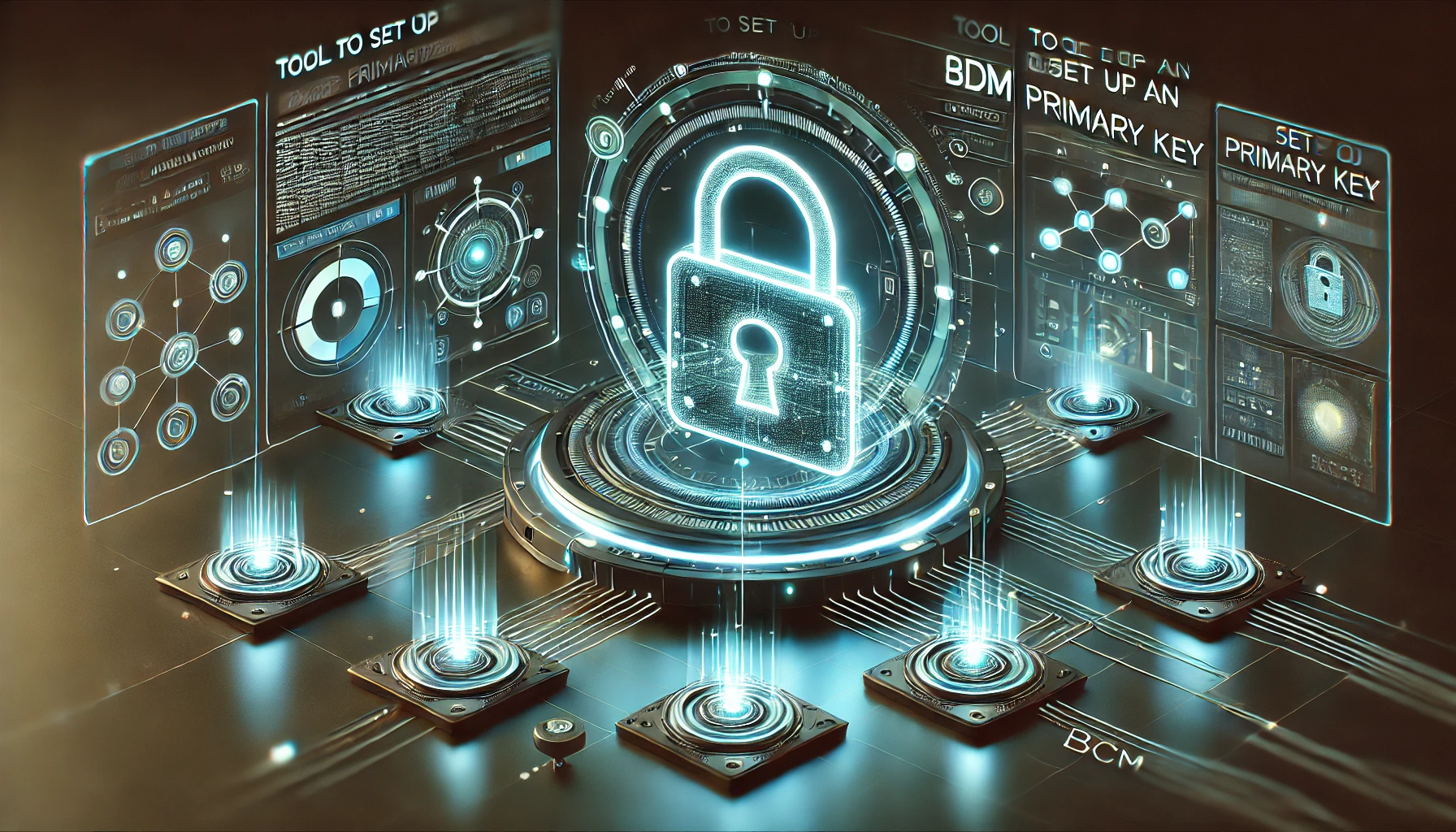
Learn the top 5 steps to Set Up SDM Primary Key in the BCM easily. Follow our detailed guide to streamline the process and use the right tools for success.
Top 5 Steps to Set Up SDM Primary Key in the BCM Easily
Setting up the SDM Primary Key in the BCM can feel like a complex and intimidating task, especially without a clear plan. The process involves multiple steps, each requiring precision and an understanding of the system’s architecture. However, with the right tools, a well-defined approach, and thorough preparation, this essential configuration can be completed without unnecessary roadblocks. This article is designed to guide you step-by-step through the process, ensuring that even users with limited experience can tool to setup of sdm primary key in the bcm efficiently and securely.
Why is Setting Up an SDM Primary Key Important?
The SDM (Security Domain Manager) Primary Key is more than just a component of the BCM—it is the foundation upon which the security of the system rests. This cryptographic key plays a pivotal role in securing communication channels, authenticating users, and protecting sensitive data within the BCM framework. Without it, the system is vulnerable to breaches and operational inefficiencies.
Benefits of a Properly Set-Up SDM Primary Key
- Enhanced Data Security:
By encrypting data and controlling access, the SDM primary key protects against unauthorized access, ensuring that sensitive information remains secure. - Simplified Key Management:
A properly configured primary key streamlines cryptographic operations, making it easier to manage encryption and decryption processes across the BCM. - Reduced Vulnerabilities:
A well-implemented key minimizes system vulnerabilities, protecting against both external threats and internal misconfigurations.
This underscores why investing time and effort into setting up the SDM Primary Key correctly is so critical for the integrity and efficiency of the BCM.
Step 1: Understand the Requirements
Before diving into the setup process, it is essential to gather and understand the prerequisites. A comprehensive preparation phase can save significant time and prevent common errors.
What Do You Need?
- A Robust Tool:
You need a reliable tool to set up the SDM primary key in the BCM. The tool should be compatible with your BCM system and capable of generating, managing, and deploying cryptographic keys seamlessly. - Access Credentials:
Ensure you have access to the BCM environment, including administrative privileges. Without the proper permissions, you may encounter roadblocks during setup. - Configuration Files and Documentation:
Gather all necessary documentation, such as system manuals and configuration files. These resources will help guide you through specific requirements unique to your system.
Key Considerations for a Successful Setup
- Hardware Compatibility:
Verify that your hardware meets the necessary specifications, including support for cryptographic algorithms like RSA or AES. - Administrator Access:
Administrator-level permissions are often required to make critical changes and updates during the setup process. - System Environment Testing:
Perform a pre-setup analysis of your BCM environment to detect potential conflicts or system limitations. For example, outdated software or unsupported modules could cause errors during installation.
By addressing these requirements upfront, you lay the groundwork for a smooth and efficient SDM Primary Key setup.
Step 2: Select the Right Tool for Setup
The tool you choose to set up the SDM primary key plays a crucial role in determining the success of the entire process. Selecting a robust and compatible tool can simplify the setup, automate repetitive tasks, and reduce the likelihood of errors.
How to Choose the Best Tool?
When selecting a tool, prioritize the following features:
- Compatibility with BCM:
Ensure the tool is specifically designed to work with your version of BCM. Tools that offer wide-ranging compatibility often come with pre-configured templates for common use cases. - Automation Features:
Tools that automate key generation, deployment, and testing can save significant time and reduce the complexity of manual configurations. - User-Friendly Interface:
Opt for tools that are intuitive and provide detailed documentation. This can help users navigate the setup process without requiring extensive technical expertise. - Support and Updates:
Choose a tool backed by a reputable vendor that offers regular updates and responsive customer support to address any issues that may arise.
Recommended Tools
| Tool Name | Features | Compatibility |
|---|---|---|
| Tool A | Automated configuration and key generation | BCM Versions 1.0–3.5 |
| Tool B | Enhanced security monitoring | BCM Enterprise Suite |
| Tool C | Lightweight and user-friendly | All BCM versions |
Invest in tools that offer robust customer support and regular updates to meet the evolving security landscape.
Step 3: Generate the SDM Primary Key
This is a crucial step where you create a new SDM Primary Key using the chosen tool. Follow these substeps:
Step-by-Step Instructions
- Access the Tool: Log in using your administrator credentials.
- Navigate to the Key Management Section: Locate the option for generating new primary keys.
- Select Key Parameters: Choose the desired encryption algorithm and key length (e.g., RSA 2048-bit).
- Generate the Key: Click the ‘Generate’ button and save the key securely.
Pro Tip
Store the generated key in a secure location like an encrypted file or hardware security module (HSM). This minimizes risks of unauthorized access.
Step 4: Configure the SDM Primary Key in the BCM
Integrating the newly generated SDM primary key into the BCM is essential to complete the setup.
Steps to Configure
- Upload the Key: Use the BCM interface to upload the SDM primary key.
- Verify Key Integration: Conduct a system-wide test to ensure the key is correctly recognized.
- Configure Access Permissions: Restrict access to the key configuration settings to authorized personnel only.
This step ensures the key works seamlessly with your BCM environment.
Step 5: Test and Validate the Setup
Testing the configuration ensures the SDM primary key functions as intended. Perform these actions:
Validation Steps
- Run Diagnostic Tests: Use the diagnostic tools provided by your BCM system to verify key operation.
- Monitor Communication Logs: Check for errors or warning messages related to key usage.
- Perform a Mock Deployment: Conduct a trial run to simulate real-world conditions.
Benefits of Thorough Testing
- Detects configuration errors early.
- Reduces downtime during live deployment.
- Enhances confidence in system security.
Common Challenges and How to Overcome Them
Challenge 1: Tool Compatibility Issues
Solution: Always choose a tool specifically designed for your BCM system. Contact the vendor to confirm compatibility.
Challenge 2: Key Storage Security
Solution: Implement advanced security measures such as multi-factor authentication and HSM for key storage.
Challenge 3: Insufficient Testing
Solution: Allocate sufficient time for comprehensive testing and engage a dedicated IT team for the process.
FAQs
What is the SDM Primary Key?
The SDM Primary Key is a cryptographic key used to secure communications and manage authentication in the BCM. It plays a vital role in maintaining the security of sensitive data.
Can I Use Any Tool for Setting Up the SDM Primary Key?
No, it’s crucial to use a tool specifically designed for the BCM environment. This ensures seamless integration and avoids compatibility issues.
How Often Should the SDM Primary Key Be Updated?
It’s recommended to update the SDM Primary Key annually or whenever there’s a potential security breach.
What Are the Risks of Not Setting Up an SDM Primary Key Properly?
Improper setup can lead to unauthorized access, data breaches, and operational downtime.
Is Professional Assistance Necessary for the Setup?
While it’s possible to set up the SDM Primary Key independently, professional assistance ensures precision and security.
Can Testing Be Skipped if Setup is Successful?
No, testing is essential to validate the setup and identify potential issues before live deployment.
Conclusion
By following these top 5 steps to set up the SDM primary key in the BCM easily, you can ensure a secure and efficient BCM system. From understanding prerequisites to testing the configuration, each step plays a critical role in achieving a robust setup. Always prioritize security and invest in the right tools to streamline the process.
For further insights into maximizing your business efficiency, consider reading our article
- Fractional CFO for Startups: Key Benefits in 2024
- Personal Injury Lawyer Marketing: Get More Clients
- Maximize Efficiency with Best Marketing Automation
- Dental Practice Marketing Tips to Attract More Patients
- Best HR Software for Startups: Must-Have in 2024
- Best Clothing Manufacturers for Startups: Top 5 for 2024
Our Blog on Insurance & our Best Articles:
- Does ClicRx Use Insurance? 3 Interesting Facts You Need to Know!
- Would an insurance adjuster trick you with a bank statement? 5 Red Flags to Watch!
- Does clicrx eye glasses use vision benefits insurance? 4 Things You Should Know!
- What Does Comprehensive Vehicle Insurance Cover by Moneytadka.com? 3 Essential Insights!
- How much does bar insurance cost in sequin Texas 2024? 3 Best Pricing Tips!
- AAL Insurance: Top 7 Benefits You Can’t Ignore!
- CIG Auto Insurance: 4 Reasons It’s the Best Choice in 2025!
Our Blog on Trading & our Best Articles:
- Blackbox Trading Explained: How It Works and Is It Right for You?
- Electronic Trading: How Technology is Transforming Financial Markets
- Mastering ICT Trading: Understanding Institutional Concepts and Strategies
- The Rise of AI Trading Software: Can Artificial Intelligence Beat the Market?
- Top 10 Best Futures Trading Platforms for 2025: A Complete Guide


